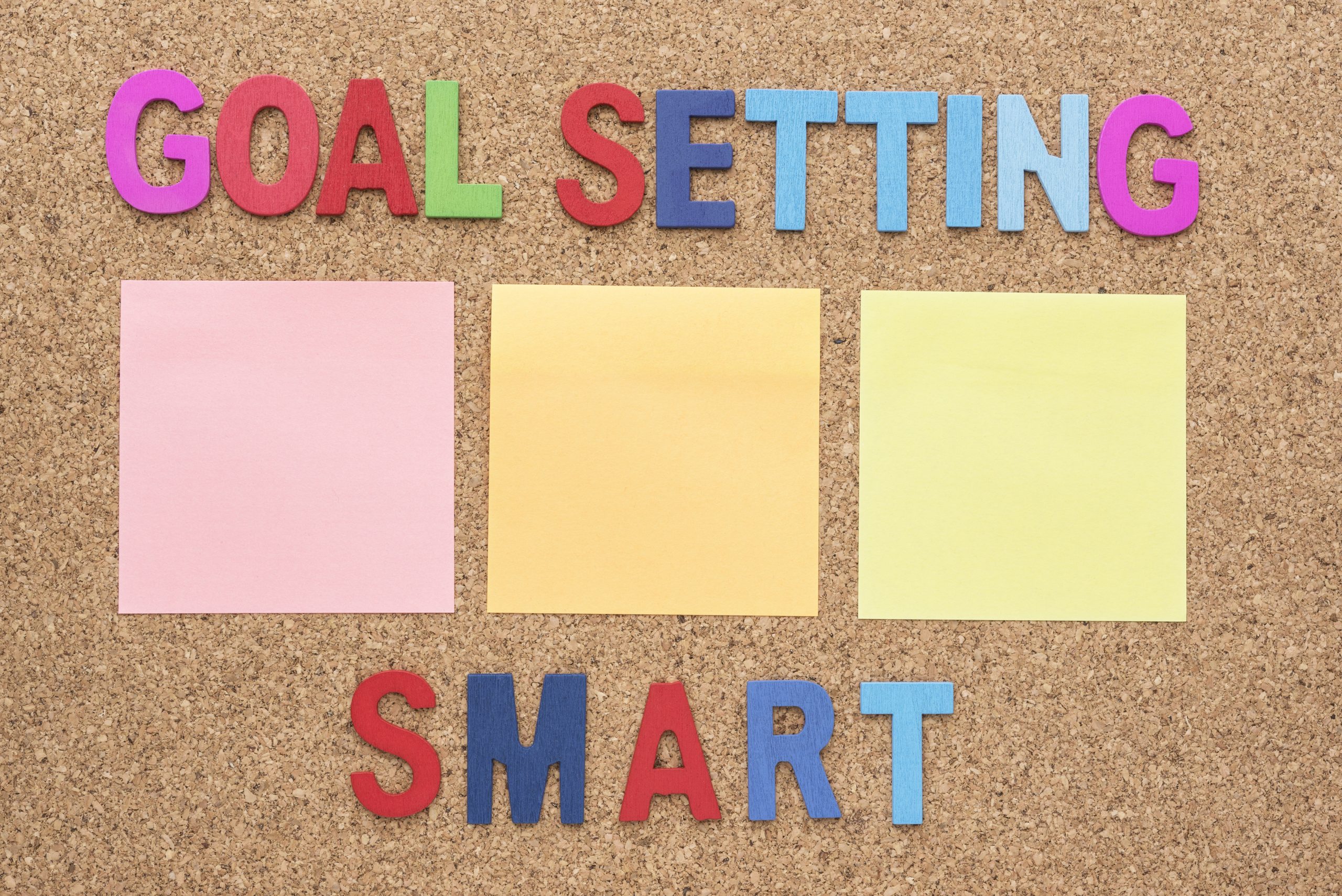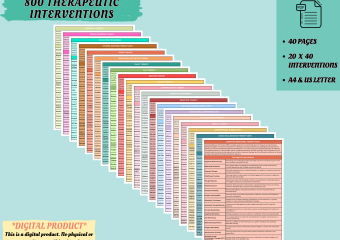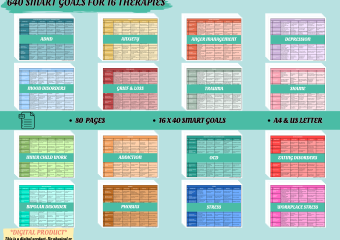How to create SMART Goals in Therapy

- How To Write Therapy Progress Notes For Mental Health (Without Drowning in Paperwork) - November 30, 2025
- How to create SMART Goals in Therapy - October 8, 2024
- MICU vs SICU: What is the difference? - March 25, 2024
When embarking on a therapeutic journey, having clear goals can make the process more meaningful and effective. It provides direction and helps both the therapist and the client monitor progress. But how do you create goals that are truly helpful? That’s where the SMART framework comes in. By defining goals that are Specific, Measurable, Achievable, Relevant, and Time-bound, therapy becomes a structured process aimed at real progress. Let’s explore how to develop SMART goals in therapy and why they matter.
What are SMART Therapy Goals?
SMART therapy goals are designed to be clear, manageable, and achievable. The acronym stands for:
- Specific: The goal should be detailed and explicit, answering questions like what, who, where, and why.
- Measurable: There needs to be a way to track progress, so you know when the goal is met.
- Achievable: The goal should be realistic and within the client’s ability to reach, given their circumstances.
- Relevant: The goal should be important to the client’s personal therapeutic journey and not just an abstract idea.
- Time-bound: Every goal should have a deadline or timeframe to create a sense of urgency and accountability.
The SMART framework is especially useful in therapy because it transforms vague desires into clear action steps. This structure is beneficial for clients looking to gain insight into their behaviors and work toward meaningful changes.
Types of Therapy Goals
Therapy goals are as varied as the individuals seeking treatment, and they often reflect the unique challenges and aspirations of each client. While every client’s journey is different, therapy goals generally fall into a few broad categories. These goals can address mental health symptoms, behavior patterns, emotional regulation, or interpersonal relationships. Understanding the types of goals can help both clients and therapists focus on areas that lead to meaningful and sustainable change.
- Symptom Reduction: One of the most common reasons people seek therapy is to reduce the severity or frequency of mental health symptoms. Whether it’s anxiety, depression, PTSD, or other mental health concerns, symptom reduction can serve as a concrete way to measure progress. For example, a client struggling with anxiety might set a goal to decrease the number of panic attacks they experience or to feel more in control during anxiety-provoking situations. Goals in this area often focus on improving coping skills, such as mindfulness techniques or cognitive restructuring, to manage distressing thoughts and feelings more effectively.
- Behavioral Changes: Behavioral goals are designed to help clients identify and shift patterns of behavior that are harmful or counterproductive. These behaviors could range from procrastination and unhealthy eating habits to more severe issues like substance abuse or self-harm. The focus here is not just on stopping a negative behavior, but also on replacing it with healthier, more adaptive actions. For example, a client working to overcome procrastination might set a goal to implement a daily task-planning routine to increase productivity. Behavioral goals are highly actionable and usually involve concrete steps that the client can take between sessions to make incremental progress.
- Interpersonal Relationship Goals: Improving relationships is a common goal in therapy, as many mental health challenges are influenced by interactions with others. Whether the client is struggling with conflict in a marriage, difficulty communicating with colleagues, or challenges in setting boundaries with friends, therapy can help build the skills necessary for healthier interpersonal dynamics. These goals might involve learning effective communication techniques, practicing assertiveness, or understanding how past experiences may be influencing current relationship patterns. A goal like “I want to improve my communication with my partner by actively listening during conversations” is an example of how a SMART goal could be applied in this context.
- Emotional Regulation: Many clients enter therapy seeking help with managing difficult emotions, such as anger, sadness, or frustration. Emotional regulation goals are focused on helping clients develop strategies to cope with and express emotions in a healthy way. This could involve learning techniques like mindfulness, journaling, or breathing exercises to manage overwhelming feelings. For example, a client might set a goal to practice deep breathing exercises whenever they feel their anger rising, with the aim of responding to triggers in a more calm and controlled manner. These goals often emphasize self-awareness and the ability to pause and reflect before reacting emotionally.
- Self-Development and Personal Growth: Therapy is not just about addressing mental health issues; it can also be a space for personal development and growth. Some clients set goals around improving self-esteem, increasing self-awareness, or building resilience. These goals often involve reflecting on core values, setting intentions for personal change, and taking steps toward becoming the person they want to be. A client may set a goal to build more self-confidence by practicing positive self-talk and gradually engaging in activities that challenge their comfort zone. In this way, therapy can be a tool for clients to explore their potential and strive for a more fulfilling and balanced life.

How to Create SMART Goals in Therapy
Creating SMART goals in therapy is a collaborative process between the therapist and the client, aimed at breaking down complex issues into manageable, actionable steps. By using the SMART framework—Specific, Measurable, Achievable, Relevant, and Time-bound—clients can gain clarity on their objectives and feel empowered to make meaningful progress. Here’s how to approach the creation of SMART goals within the therapeutic setting:
- Start with a Broader Vision: The process often begins by exploring the client’s overall aspirations, challenges, and areas they want to improve. This broader vision could include a desire to manage stress better, build stronger relationships, or enhance self-esteem. By identifying the general areas where the client feels stuck or wants to grow, the therapist can help narrow down specific aspects of those areas that are most relevant to the client’s current life situation. For instance, a client dealing with anxiety might express a desire to feel calmer in social settings. This is the foundation for more specific goal-setting.
- Make it Specific: Once the general focus is established, it’s time to get into the specifics. Vague goals, such as “I want to be happier” or “I want to feel less anxious,” can be difficult to work toward because they don’t provide a clear path for action. In contrast, a specific goal zeroes in on a particular behavior, thought pattern, or emotional state that can be addressed. For example, instead of “I want to feel less anxious,” a more specific goal could be, “I want to feel more comfortable speaking in meetings at work.” This clarity helps both the therapist and client create targeted strategies for success.
- Ensure it’s Measurable: To track progress, it’s essential to define how success will be measured. A measurable goal allows the client to observe their improvements over time, which can boost motivation and self-confidence. For instance, a client might measure their success by using a self-assessment tool, such as rating their anxiety on a scale of 1-10 before and after a social interaction. Alternatively, measurable progress can be tracked through behavioral outcomes, such as the number of times they engage in public speaking or complete a relaxation exercise. Having a measurable aspect ensures that progress is not just based on subjective feelings but on concrete, observable change.
- Check if it’s Achievable: While it’s important to aim for growth, it’s equally crucial that the goals are realistic and attainable. Setting unachievable goals can lead to frustration and discouragement. For example, aiming to completely eliminate anxiety in a short period may be too ambitious, especially for clients with long-standing anxiety disorders. Instead, a more achievable goal could be to reduce anxiety to a manageable level or to increase the number of anxiety-free days over time. A therapist might help the client assess their current abilities and external circumstances, ensuring the goal is challenging yet realistic given their current life situation.
- Relevance Matters: Relevance ensures that the goal is directly connected to the client’s personal values, needs, and overall therapeutic journey. Goals that are not relevant to the client’s actual challenges or desires may feel forced or lack emotional resonance, making it harder to stay committed to them. For example, if a client’s primary struggle is social anxiety, a goal focused on improving communication at work may be more relevant than a goal related to general self-esteem. Ensuring the goal is relevant to the client’s life circumstances increases the likelihood that they will stay engaged and motivated throughout the therapeutic process.
- Set a Timeframe: Time-bound goals introduce a sense of urgency and provide a timeline for both the client and therapist to work within. Without a deadline, goals can feel open-ended, making it harder to gauge progress or maintain momentum. A short-term goal might be to practice a relaxation technique daily for two weeks, while a long-term goal could be to reduce public speaking anxiety by 50% within three months. Setting a timeframe creates accountability and helps the client and therapist regularly review and adjust the goal if necessary. This also helps to break down larger goals into smaller, more manageable tasks, which can make the process feel less overwhelming.
- Review and Adjust as Needed: Creating SMART goals in therapy is not a one-time event. Regularly reviewing progress and adjusting the goals based on the client’s needs and growth is an integral part of the therapeutic process. As clients make progress, goals may evolve. A goal that was once difficult may become easier, allowing the client to set more ambitious objectives. Conversely, if a goal turns out to be too challenging, the therapist and client can reassess and modify it to ensure continued progress without unnecessary frustration.
- Celebrate Milestones: While achieving the final goal is important, it’s equally valuable to celebrate the smaller milestones along the way. Recognizing progress, even if it’s incremental, reinforces positive behavior and helps sustain motivation. For example, if a client struggling with social anxiety attends a social event for the first time in months, that’s a significant achievement, even if their ultimate goal is to feel comfortable in such situations. Celebrating these milestones can build momentum and encourage the client to continue pushing toward their larger therapeutic goals.
SMART Goal Template
To make the process more straightforward, here’s a simple template you can use to create SMART goals in therapy:
Specific: What exactly do I want to accomplish?
Measurable: How will I track my progress?
Achievable: Is this goal realistic given my current situation?
Relevant: Why is this goal important to my overall mental health journey?
Time-bound: By when do I want to achieve this goal?
For example:
Specific: “I want to reduce my anxiety in social situations.”
Measurable: “I will use a stress scale from 1-10 to measure my anxiety levels before and after social events.”
Achievable: “I will practice deep breathing techniques daily.”
Relevant: “This goal will help me feel more comfortable and confident in social settings, which is important for my relationships and personal happiness.”
Time-bound: “I want to achieve this within the next month.”
Conclusion
SMART goals provide a structured way to approach therapy and make tangible progress. By working together to create goals that are Specific, Measurable, Achievable, Relevant, and Time-bound, both the therapist and client can see clearer pathways toward growth. It’s not just about feeling better; it’s about defining what “better” looks like and taking active steps to get there.


![MENTAL HEALTH THERAPY PROGRESS NOTES TEMPLATE CHEAT SHEET [PDF] MENTAL HEALTH THERAPY PROGRESS NOTES TEMPLATE CHEAT SHEET [PDF]](https://studyinnursing.com/wp-content/uploads/2025/11/mental-health-therapy-progress-notes-pdf-340x240.png)
